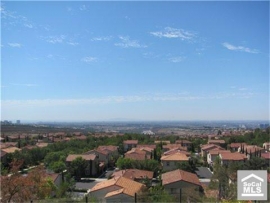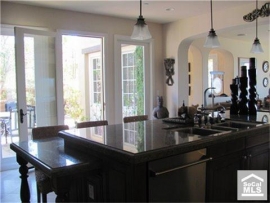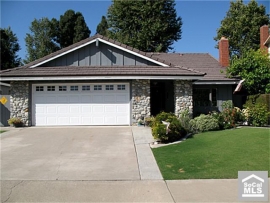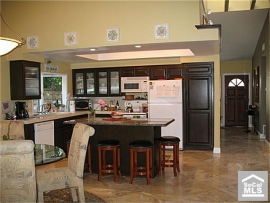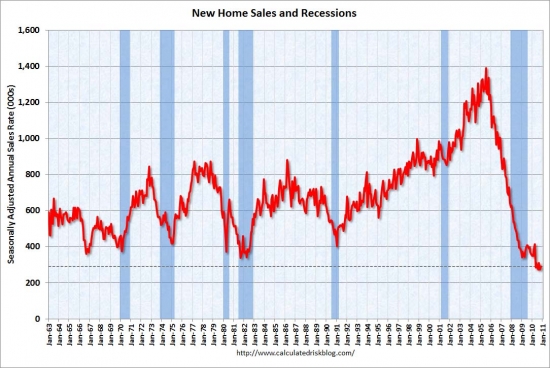In August, prices dipped below rental parity for the first time in over a decade. In September, prices fell further below rental parity than any time in the 00s.
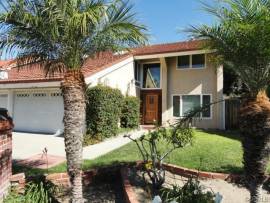
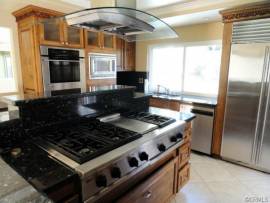
Irvine Home Address … 4051 ESCUDERO Dr Irvine, CA 92620
Resale Home Price …… $649,000

The sun is on my side.
Take me for a ride.
I smile up to the sky.
I know I'll be all right.
Natasha Bedingfield — Pocketful Of Sunshine
There have been few rays of sunshine for the local housing market over the last five years. Prices are down about 30% from the peak, and hopes of a bottom were crushed when a double dip ended the false rally of 2009 and 2010. The bad news can't go on forever. Prices won't fall to zero. Eventually, prices get low enough that people get a reason to buy other than dreams of capturing appreciation. Once prices fall below rental parity, people can buy to save money versus renting.
Payment affordability
When we talk about affordability, everything is relative. Incomes are a good measure, and using a 31% DTI applied to local incomes provides a useful measure of affordability. Another measure is local rents. Since rents and incomes are closely tethered (people don't typically borrow their rent), local rents are a good proxy for local incomes.
Since most house purchases are financed, the affordability of monthly payments is important. Since rents are paid on a monthly basis as well, the comparison of the monthly cost of ownership to rent is a very useful measure of affordability. Basically, if people can afford their rent, they could afford a payment equivalent to rent. Thus rental parity is a good measure of payment affordability.
Financing terms are important
When examining the cost of ownership, the financing terms become very important. The folly of the housing bubble was to abandon amortizing mortgages in favor of interest-only and negative amortization loan products. People used these Ponzi loan programs to lower their monthly payments and ostensibly lower their cost of ownership. While they did lower their payments for a time, the terms of these loans were not stable. At some point, they needed to recast to fully amortizing loans which would be paid off. The “payment shock” of this recast was a timebomb waiting to blow up a family's balance sheet. Most of these loans have already blown up, and the borrowers are waiting in shadow inventory for lenders to clear them out.

People sought ways to defuse the recast bomb by a process known as “serial refinancing.” Right before the bomb was due to go off, people assumed they would be able to refinance into a new loan and reset the clock. Most borrowers believed these financing terms would always be available, so they had little risk of being around for the explosion. As we all know now, these borrowers were all wrong.
When considering the cost of ownership for calculations of payment affordability, the cost of an amortizing mortgage must be considered. Interest-only and negative amortization loans artificially lower the cost of ownership, but these methods are not sustainable.
ARMs are dangerous too
Amortizing adjustable-rate mortgages are also a dangerous product. People select them because they carry a lower interest rate, and the payments are marginally more affordable. These loans work great when interest rates are falling, but when interest rates rise, loan payments go up, and the savings from early payments is more than made up for by increasing costs later on.
The real danger with an ARM loan is embedded into obscure terms of the promissory note. The loan is written with a contract interest rate that changes periodically. There is a contractual limit as to how high the interest rate can go. Unfortunately, affordability is only measured against the contract interest rate. If interest rates rise, the payments could very easily become unaffordable, and the borrowers could face the same problems with default and foreclosure many are dealing with today.

The worst part about ARMs is that the additional risk is not necessary. Fixed-rate mortgages also allow for refinancing when interest rates drop. Borrowers simply refinance into a new loan. There is no need to use ARMs to capture the benefit of falling interest rates.
Of course, despite the problems with ARMs, many people will still use them and assume the government will bail them out if the going gets tough. It's hard to argue with a borrower who believes that. So far, the government has shown every sign of bailing out even the most foolish of borrower behavior.
Interest rates and principal balance
Interest rate and purchase price matters little when the loan is held to term. If a borrower makes 360 (30 x 12) equal payments, the composition of principal and interest is irrelevant. However, very few borrowers hold a loan to term as many sell or refinance.

Whether interest rates are high or low benefits certain parties and hurts others.
Low interest rates hurt cash buyers or those who utilize large down payments. A cash buyer would prefer to pay a very low price. Unfortunately, low interest rates inflate prices, so cash buyers are adversely impacted by low rates. Conversely, borrowers with little down benefit the most from low interest rates. Price to them is mostly about monthly payment since they are financing most of the transaction. Further, low interest rates followed by high inflation (conditions likely in our future) works strongly in favor of those with who put little down and borrowed heavily as the dollars they are repaying are worth less than the dollars they borrowed.
High interest rates strongly favor cash buyers. High interest rates make for low principal balances and low prices. High interest rates hurt borrowers who put little down because most of their payment goes toward interest. High interest rates followed by declining interest rates favors those who can refinance into a lower rate to reduce the interest burden.
It's very difficult to predict what will happen with interest rates and inflation. We are at the bottom of the interest rate cycle now, and higher rates and higher inflation are a possible, perhaps even likely, scenario. In any case, locking in a cost of ownership lower than the cost of a comparable rental is usually a good idea. The danger being a rise in interest rates that causes further weakening of prices which makes it impossible to sell without taking a loss. Landlording becomes the logical alternative, but that isn't for everyone.
Irvine prices are finally below rental parity
The low interest rates and falling prices have finally pushed Irvine below rental parity. Not every house in every neighborhood, but a broad spectrum of housing options are now trading at or below rental parity. It still takes effort to find these properties, but they are common enough to warrant searching in Irvine if you are looking to buy now.
.png)
The chart above was part of the OC Housing Market Presentation from last Wednesday. When I first prepared this chart last month, I was quite surprised to see Irvine trading below rental parity. The reading for September was the lowest in the last 11 years. Much of this improvement is due to low interest rates engineered by the federal reserve, but with their commitment to keeping rates low for the foreseeable future, waiting for the next interest rate peak to buy may take a while.

I remember early astute observers on the blog who quipped, “Irvine has never traded at rental parity.” Well, actually it has. In fact, it traded well below rental parity during the late 90s, and it will likely dip below rental parity again for at least the next few years.

I calculate the rental parity formula by taking 90% of the comparable rent and computing a loan balance. From there, I tack on a 20% down payment. I use 90% of the comparable rent to allow for taxes, insurance, HOA, and adjust for tax savings. Since there is no private mortgage insurance (PMI), most of the rent goes toward the payment.
FHA buyers face different conditions, so rental parity for them is calculated differently. I only use 75% of the comparable rent, and I add on a 3.5% down payment. Based on that standard, Irvine is still out of reach.

FHA buyers only make up a small percentage of Irvine resales, mostly concentrated in condos which is why we have seen so many of those sporting low prices.
The table below shows the degree of price inflation relative to rental parity by zip code.
.png)
The most inflated zip code remains 92603 — Turtle Rock, Turtle Ridge and Quail Hill. This zip code is deflating fast as relative price inflation has declined 40% over the last two months. Falling prices and falling interest rates will do that.
Northwood (92620) is also inflated, but prices are coming down.
Oak Creek, Orangetree and Portola Springs are the anomaly. Prices have been rising there for the last three months and are currently above rental parity. Rents are also rising in that zip code. We speculate this is due to restricted supply, but for whatever reason, it is the only zip code showing strength in Irvine.
Most of the remainder of Irvine is showing falling prices and firming rents. When combined with falling interest rates, the result is improving affordability as prices fall below rental parity. We anticipate this trend will continue and reach its zenith for this year's cycle in January. Prices over the next 6 months will generally be affordable by rental parity standards. With the uptick in foreclosure filings, there is no guarantee of a spring rally to pull the market out of the doldrums.
The buying window is open
I have consistently maintained on this blog that buying when prices are below rental parity is a good idea. I still believe that to be true. Rising prices are not a requirement for being bullish. Long-term owners who want to lock in a cost of ownership lower than comparable rents have options bubble buyers do not. The below rental parity buyer will be saving money each month, and if they have to move while prices are below their purchase price, they will be able to rent the property and avoid making a sale.
Prices are generally sticky on the way down, but they become much stickier when underwater owners don't need to sell to patch a hole in their family's balance sheet. Once prices reach rental parity, unless there is a huge influx of supply (which is still possible), prices generally don't go much lower. Of course, rising interest rates could easily lower the value of rental parity, and eventually this will happen, but the federal reserve seems committed to preventing higher interest rates in the medium term.
Owner-occupant who bought a Ponzi's house at auction
One of the topics Shevy will cover tonight at the REO and Short Sale Workshop is buying at the auction. It is one method owner occupants have for obtaining real estate below current market costs. The current owner of today's featured property bought it at auction about three years ago on 10/30/2008. His $547,000 purchase price represented a significant discount at the time. Even with the ongoing weakness in pricing, he will still be able to sell without losing money.
The previous owner was a full-blown Ponzi:
- The house was purchased on 7/2/2002 for $481,000. The owner used a $384,800 first mortgage, a $96,200 second mortgage, and a $0 down payment.
- On 8/12/2003 he refinanced with a $487,000 ARM with a 4% rate, probably a 1/1 ARM.
- On 9/17/2003 he obtained a $97,500 HELOC. After only one year of ownership, he was able to pull out over $100,000.
- On 4/14/2004, about seven months later, he refinanced again with a $560,00 ARM with a 3.87% interest rate and obtained a $70,000 HELOC.
-
On 11/16/2004, about sevens months later, he obtained a $150,000 HELOC.
.jpg)
- On 8/31/2005 he refinanced with a $612,500 Option ARM with a 1% teaser rate and obtained a $175,000 HELOC. I wonder if this guy was a mortgage broker?
- On 4/24/2006 he traded in his HELOC for a $250,00 stand-alone second mortgage.
- In three and one half years, after putting no money down, this Ponzi cashed out $381,500. That's an average of $109,000 per year!
- He defaulted shortly thereafter and squatted for about 15 months.
Foreclosure Record
Recording Date: 02/22/2008
Document Type: Notice of Sale
Foreclosure Record
Recording Date: 09/17/2007
Document Type: Notice of Default
Since most of the worst HELOC abusers have already been flushed from the system, I haven't profiled many really bad cases lately. This guy was a real blast from the past. He's a good reminder of the problems of the housing bubble.
When I first saw this property, I felt it was one of the nicer properties we have seen trading below rental parity — unless you believe you can find a rental this nice for less than $2,500 per month. It's deal like this one on nicer properties that are becoming more prevalent, and the reinforce what I am seeing in the data. Much of Irvine is now at or below rental parity.
——————————————————————————————————————————————-
This property is available for sale via the MLS.
Please contact Shevy Akason, #01836707
949.769.1599
sales@idealhomebrokers.com


Irvine House Address … 4051 ESCUDERO Dr Irvine, CA 92620
Resale House Price …… $649,000
Beds: 4
Baths: 3
Sq. Ft.: 2344
$277/SF
Property Type: Residential, Single Family
Style: Two Level, Ground Level
Year Built: 1970
Community: Northwood
County: Orange
MLS#: T11134799
Source: CRMLS
Status: Active
On Redfin: 1 day
——————————————————————————
Welcome to the wonderful Northwood community in Irvine. This home features a remodeled kitchen with dual ovens, 6 burner cooktop and a Subzero fridge. The master suite features a balcony for you to relax on. The property also has jacuzzi and pool to enjoy those warm summer days. There are many other upgrades done to this home for you to come view.
——————————————————————————————————————————————-
Proprietary IHB commentary and analysis ![]()
Resale Home Price …… $649,000
House Purchase Price … $547,000
House Purchase Date …. 10/30/2008
Net Gain (Loss) ………. $63,060
Percent Change ………. 11.5%
Annual Appreciation … 5.7%
Cost of Home Ownership
————————————————-
$649,000 ………. Asking Price
$129,800 ………. 20% Down Conventional
4.20% …………… Mortgage Interest Rate
$519,200 ………. 30-Year Mortgage
$125,290 ………. Income Requirement
$2,539 ………. Monthly Mortgage Payment
$562 ………. Property Tax (@1.04%)
$0 ………. Special Taxes and Levies (Mello Roos)
$135 ………. Homeowners Insurance (@ 0.25%)
$0 ………. Private Mortgage Insurance
$0 ………. Homeowners Association Fees
============================================
$3,237 ………. Monthly Cash Outlays
-$416 ………. Tax Savings (% of Interest and Property Tax)
-$722 ………. Equity Hidden in Payment (Amortization)
$195 ………. Lost Income to Down Payment (net of taxes)
$182 ………. Maintenance and Replacement Reserves
============================================
$2,475 ………. Monthly Cost of Ownership
Cash Acquisition Demands
——————————————————————————
$6,490 ………. Furnishing and Move In @1%
$6,490 ………. Closing Costs @1%
$5,192 ………… Interest Points @1% of Loan
$129,800 ………. Down Payment
============================================
$147,972 ………. Total Cash Costs
$37,900 ………… Emergency Cash Reserves
============================================
$185,872 ………. Total Savings Needed
——————————————————————————————————————————————————-
Shevy Akason and Larry Roberts will host a short sale and REO workshop at 6:30 PM Wednesday, October 19, 2011, at the offices of Intercap Lending (9401 Jeronimo, Suite 200, Irvine, CA 92618). Register by clicking here or email us a sales@idealhomebrokers.com.
.png)
.png)














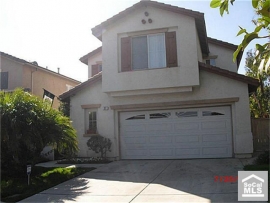
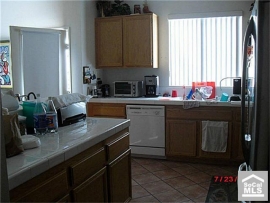









 The above list is a small sample. Most of these were mortgages over $1,000,000, and many of them have been owned by lenders since 2008.
The above list is a small sample. Most of these were mortgages over $1,000,000, and many of them have been owned by lenders since 2008.


